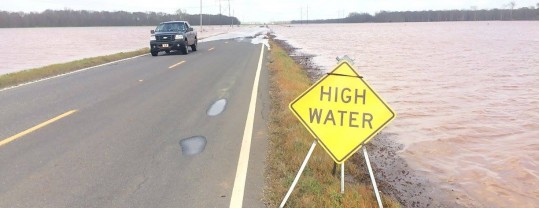DTN Ag Meteorologist
OMAHA (DTN) — DTN’s weather forecast the first week of March for the following seven-to-10-day period showed the potential for 10 inches of rain in Louisiana, Arkansas, Mississippi and eastern Texas. That forecast was verified, and then some, with maximum rainfall amounts in the Delta from March 9-11 totaling more than 20 inches.
Flooding from that rainfall is widespread, with many roads and schools closed, numerous high-water rescues performed, and homes and businesses evacuated. And that was just the “people” side of things.
Agriculturally, there is a huge blow to crop and livestock production. Cattle producers likely had some death loss from the flooding. Also, many pastures are flooded and unusable for the time being, as evidenced by one social media plea of “any pasture in Texas available, let me know.”
And then there’s the grain situation. When DTN asked growers how long the flooding would keep them out of their fields, April 25 was given as a new re-start date. That is a six-and-a-half, almost seven-week, delay from the time of the downpour around March 10. That’s basically a month and a half until Delta growers can get back to fieldwork. Not all locations in the region received the heaviest rains but, overall, the region could see at least a month delay in field work.
There is also loss potential for the region’s soft red winter wheat crop, and that possibility extends into the Ohio Valley as well.
EFFECTS ON CORN MARKET QUESTIONABLE
Whether late planting makes a difference to the corn market, however, is questionable. Typically, a delay in Delta corn planting would see September corn futures rally to a premium versus the December contract. But DTN Senior Analyst Darin Newsom said hefty on-farm corn supplies right now will likely mute such a move.
“Basis could already (weaken) by the ‘second harvest’ of 2015’s crop, otherwise known as everyone in the Midwest taking their 8 billion bushels (my rough estimate) to town during spring and early summer,” Newsom said.
Perhaps the greatest price-rally potential from the Delta rain event is that delayed corn planting pushes pollination into the middle of summer.
“Late-planted corn in the South will be more vulnerable to heat at pollination time,” said DTN Analyst Todd Hultman. “The possibility of yield loss would be a minor bullish contributing factor for corn prices to consider with all the other events that develop in 2016.”
The heavy rains of spring 2016 have caused many complications — local, regional, national and possibly international — when it comes to supply and availability. Hurdles to crop output this year in the U.S. appear to have already started.
Bryce Anderson can be reached at bryce.anderson@dtn.com
Follow Bryce Anderson on Twitter @BAndersonDTN

